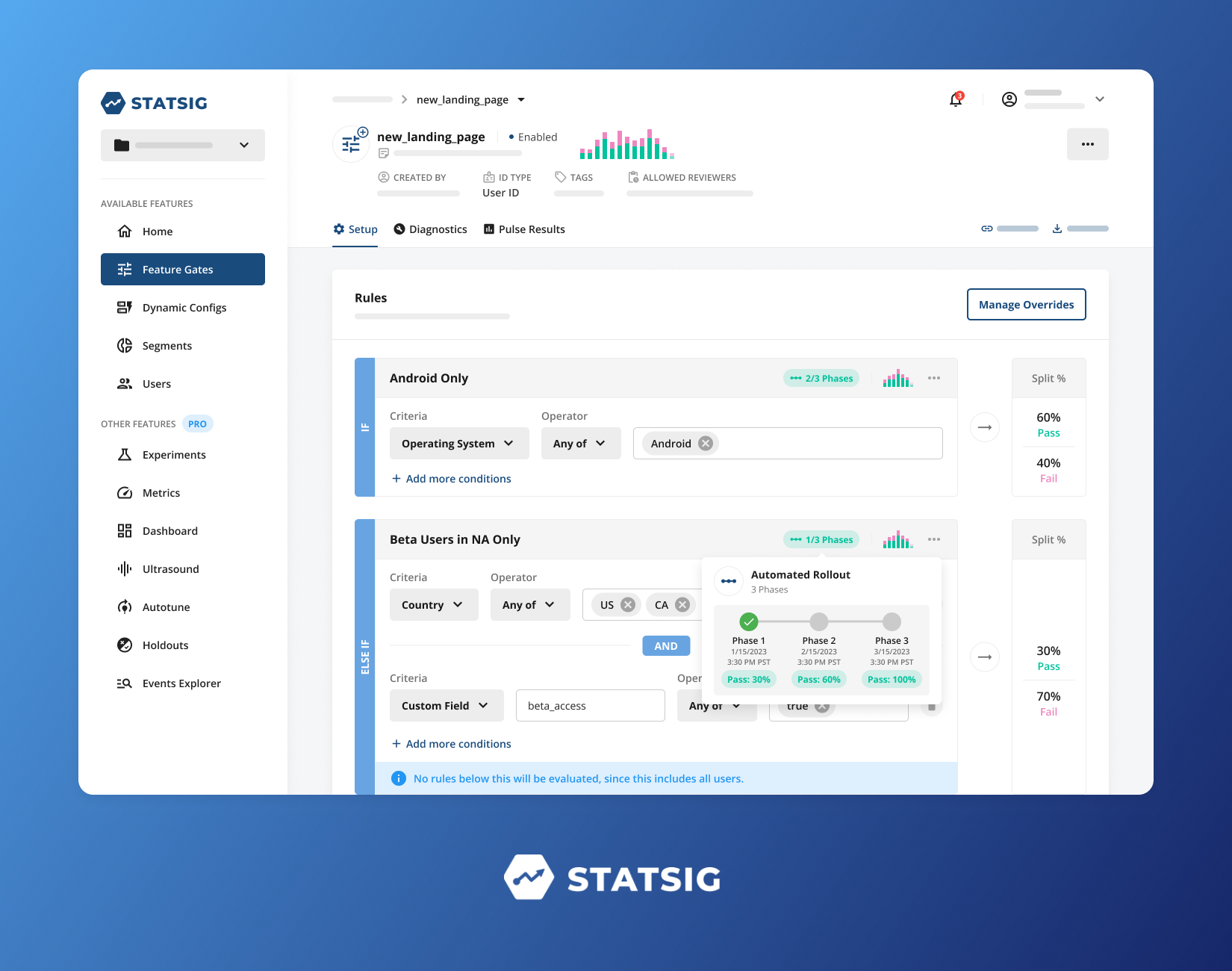Statsig, the well-funded Bellevue, Washington-based startup that enables product teams to test and evaluate new features with the help of feature gates and other experimentation tools (using live data from real customers), today announced that it is essentially making its feature gating capabilities available for free to most users.
The new allowance in the free plan, which previously allowed for 5 million events per month, is now 500 million events, which according to the company means that all but its largest customers will now be able to use this core part of its service for free.
It’s worth stressing that to use Statsig’s advanced analytics tools, you’ll still have to pay up. As Statsig founder and CEO Vijaye Raji told me, there are significant cost attached to running some the analytics workloads for some of the company’s larger customers, but the feature management service is relatively cheap to operate for Statsig.
“We were: what is the biggest number we can pick? Different levels, different sessions have different numbers of events that people may generate, but if you were to pick something that is generating a lot of events and then pick a million users, what would that — on average — generate? That came to about 500 million,” Raji explained. He also noted that based on the math the team did, if only a few free users move up to the paid plan, that will cover the cost of the free plan and its analytics features. Welcome to the age of product-led growth.
The free plan is only limited by the number of events. There are no limitations to the number of feature gates, users, seats or environments. Free users also get access to the service’s user targeting and segmentation features.
The company, which was one of the few startups that continued to work in-person during the pandemic, says it now has well over 900 companies on its platform. The logos on its homepage include the likes of Brex, OpenSea, Microsoft, Notion, Figma, Flipkart and Lime. Raji noted that at first, the company expected that most of the companies on its platform would be in the Series A to Series D range.
“There are tools and then there’s this sophistication of what you can do with it and who all can use the tool inside the company,” he explained when I asked him about the company’s user base. “If it requires data science folks, then you have added a bottleneck to your data science team. But if the tool can be accessed by product managers and engineers and even designers to understand how the product is doing without having to go run a test explicitly — every piece of the product, if you can attribute it back to: this team built these 10 features and each feature can be attributable to the metric movement on that side — that’s what we’re doing. It’s a little different from traditional A/B testing.”
Statsig expands its free feature management tools by Frederic Lardinois originally published on TechCrunch









